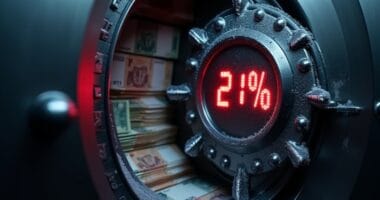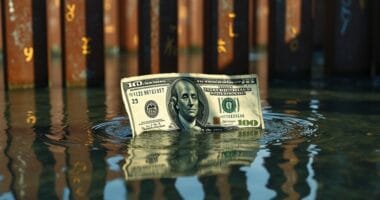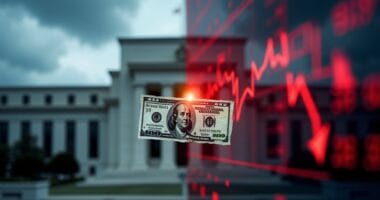Market chaos has the Fed sweating bullets as $5 trillion vanishes from U.S. stocks. With a 32% chance of recession looming, speculation about emergency rate cuts is hitting fever pitch. The Fed’s pulled this move seven times since 2000, but timing is everything – act too fast, spark panic; wait too long, markets spiral. Sure, cuts could calm things down, but they might just signal more trouble ahead. The real story goes deeper than just numbers.

Market chaos has the Federal Reserve on high alert, with growing speculation about another emergency rate cut to calm the storm. With $5 trillion vanishing from U.S. stocks in a matter of days, the panic feels eerily familiar. We’ve seen this movie before – 2008, 2020, same story, different crisis.
The Fed’s got a track record of pulling the emergency cord when things get ugly. Since 2000, they’ve made seven emergency cuts – three during the dot-com mess and 9/11, two in the 2008 meltdown, and another two when COVID hit. Like a financial firefighter, they show up when the market’s burning down. With the current rate sitting at 4.25-4.5 percent, the Fed has room to make aggressive moves if needed.
But here’s the thing: emergency cuts are a double-edged sword. Sure, they can calm markets and juice the economy by making borrowing cheaper. But they also scream “PANIC!” to everyone watching. It’s like telling people there’s no reason to worry while running for the exits. Not exactly confidence-inspiring. Recent surveys suggest there’s already a 32% chance of recession in the next twelve months.
JPMorgan’s Bob Michele and other Wall Street types are pointing to stressed corporate conditions and market chaos as reasons for immediate action. Smart investors are focusing on defensive investments to protect their portfolios during this volatile period. The similarities to past crises are hard to ignore. Severe market stress? Check. Economic warning lights flashing? Double check.
But the Fed’s got to weigh whether pulling this trigger too soon could backfire. Critics argue that market tantrums alone shouldn’t force the Fed’s hand. They need solid economic data, not just crying traders, to justify such dramatic action. Plus, emergency cuts burn through ammunition they might need later.
Once you start this dance, markets expect an encore. The stakes are massive. Wait too long, and things could spiral. Act too soon, and you might spark the very panic you’re trying to prevent. It’s a high-wire act with trillion-dollar consequences.
Whatever happens, one thing’s certain: the Fed’s watching this mess like a hawk, finger hovering over the emergency button.





